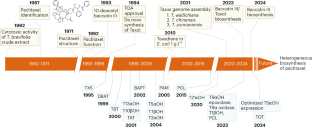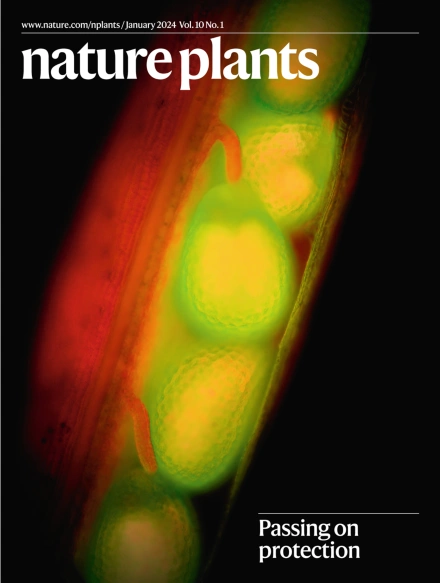Post-genomic illumination of paclitaxel biosynthesis
IF 15.8
1区 生物学
Q1 PLANT SCIENCES
引用次数: 0
Abstract
Paclitaxel rapidly became one of the most effective anticancer drugs. However, the production of paclitaxel is hindered by substantial challenges, particularly considering the significant quantities of drug required and the inherently low concentration of paclitaxel and its intermediates in plants. Paclitaxel is currently produced in a so-called semi-synthesis in which baccatin III is extracted from Taxus species and chemically converted to paclitaxel. Despite the fact that many of the intermediates of paclitaxel biosynthesis are yet to be experimentally determined, a set of recent papers—facilitated by the sequencing and assembly of three Taxus genomes—has uncovered the minimal gene sets for both baccatin III and paclitaxel biosynthesis. Here we summarize the key milestones towards our understanding of paclitaxel biosynthesis and highlight recent advancements made possible by genome-level analysis of potential key genes involved. We argue that these studies will ultimately pave the way towards the elucidation of the entire paclitaxel biosynthetic pathway and facilitate the industrial production of paclitaxel via synthetic biology approaches. However, several major challenges lie ahead before we can fully tap into the amazing curative potential that taxanes provide. The production of the anticancer drug paclitaxel depends on the extraction of the intermediate baccatin III from Taxus species. This Review highlights recent progress in genome-level analysis of paclitaxel and baccatin III biosynthesis based on sequenced Taxus genomes to guide the future discovery of biosynthesis genes.


紫杉醇生物合成的后基因组学启示
紫杉醇迅速成为最有效的抗癌药物之一。然而,紫杉醇的生产面临着巨大的挑战,特别是考虑到所需的大量药物以及紫杉醇及其中间体在植物中固有的低浓度。目前,紫杉醇是通过所谓的半合成法生产的,即从紫杉树种中提取巴卡丁 III,然后通过化学反应转化为紫杉醇。尽管紫杉醇生物合成的许多中间体尚未通过实验确定,但最近的一系列论文--通过对三个紫杉属植物基因组的测序和组装--发现了巴卡丁 III 和紫杉醇生物合成的最小基因组。在此,我们总结了我们了解紫杉醇生物合成的重要里程碑,并重点介绍了通过对潜在的关键基因进行基因组水平分析而取得的最新进展。我们认为,这些研究最终将为阐明整个紫杉醇生物合成途径铺平道路,并促进通过合成生物学方法实现紫杉醇的工业化生产。然而,在我们充分挖掘紫杉醇类药物惊人的治疗潜力之前,还有几大挑战摆在我们面前。
本文章由计算机程序翻译,如有差异,请以英文原文为准。
求助全文
约1分钟内获得全文
求助全文
来源期刊

Nature Plants
PLANT SCIENCES-
CiteScore
25.30
自引率
2.20%
发文量
196
期刊介绍:
Nature Plants is an online-only, monthly journal publishing the best research on plants — from their evolution, development, metabolism and environmental interactions to their societal significance.
 求助内容:
求助内容: 应助结果提醒方式:
应助结果提醒方式:


